Need an escape? Take a virtual trip — or plan a real trip — to the largest Roman Catholic country in the world.
Lenten Campaign 2025
This content is free of charge, as are all our articles.
Support us with a donation that is tax-deductible and enable us to continue to reach millions of readers.
When you think about Brazil, images of brilliant natural beauty, and lively dance and music may come to mind. A lot of people don’t know, though, is that religion is a very important part of their culture. Brazil is the largest Roman Catholic country in the world. Two-thirds of the Brazilian population is Catholic, and the number of their churches attests to this.
In Sao Paulo alone there are over 11,500 parishes. However, it’s not just the great number of churches in Brazil that’s notable– it’s the beauty of them. The color and joy with which you would describe the Brazilian culture is reflected in their churches, which are decorated with paintings and avant-garde architecture.
The Catholic Church arrived with the Portuguese during the conquest in the 16th century. Several parishes were constructed back then and are still standing, displaying the architecture and style of the early days. However, not all churches there are centuries old, as several churches were constructed during the 20th century by world famous Brazilian architects, such as Oscar Niemeyer.
Here are some of the most beautiful churches in Brazil.
Our Lady of Brazil Parish (Paróquia Nossa Senhora do Brasil)
Located in the neighborhood Jardim América, one of the most beautiful areas in the city of Sao Paulo, this parish was founded in 1940. The idea was to create a church that portrayed a modern Brazilian style. However, the initial project grew more complex with every year that passed during its construction. The architect Bruno Simões Magro was in charge of the project and he began to build it in 1942, but it took him 14 years to finish it, thanks to the extreme detail in the interior decorations.
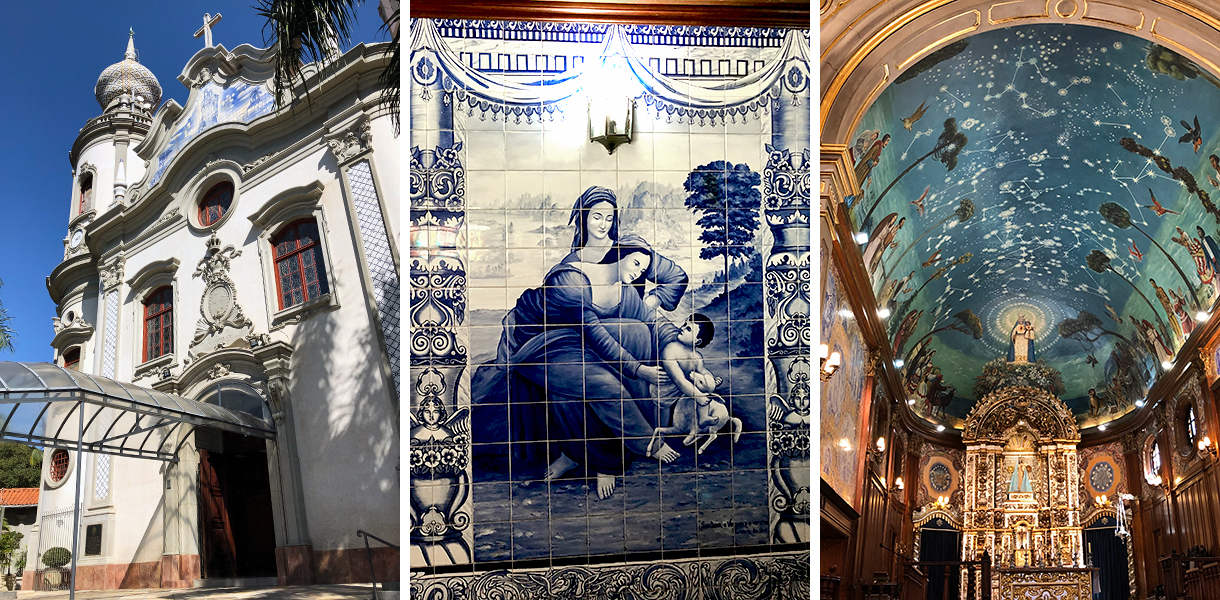
Although it’s a beautiful construction from the moment you see it, next to a park rich in vegetation, it’s not until you go inside that you are truly impressed. The interior is covered in ceramic tiles painted by hand in blue. Each tile contributes to a part of a story. The interiors were defined by the painter and ceramist Antônio Paim Vieira who wanted to show the national identity of the church through the art within. The tiles (which you can even find in the restrooms) are impressive, but not as impressive as the painting on the ceiling. The artist created a starry sky that represents the day of the Nativity of Mary. At the center of the painting you can see the Virgin and child surrounded by representatives from the different Brazilian regions.
Monastery of St. Benedict (Mosteiro de São Bento)
Located in Rio de Janeiro, this is still an active monastery with one of the most impressive churches in the city, covered in gold. The monastery was founded in 1590 by a couple of monks who came from the monastery of the city of Bahía. They arrived 24 years after the foundation of the city, turning this place into the home of the order of the Benedictines. The choir in the church is still used by the monks.
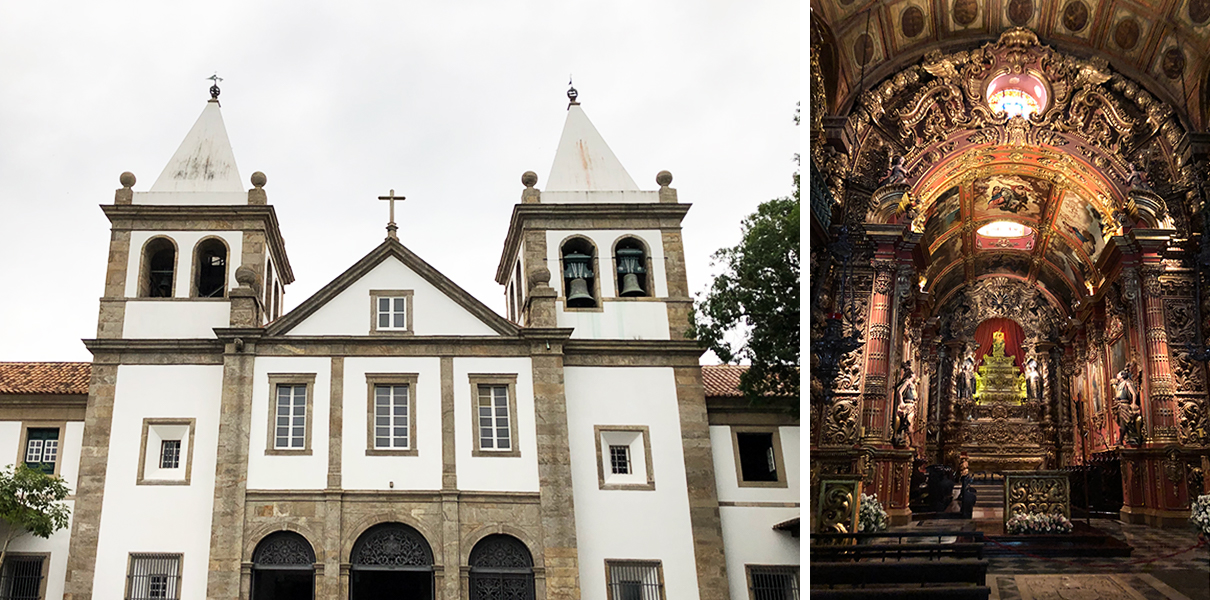
The Abacial Church is one of the most important monuments that represent the Portuguese-Brazilian Baroque. It took 100 years to finish its construction, which began in 1633. When you first arrive the facade might look like a very simple construction, with clean lines in stone, but when you finally enter, the interior is completely different. The walls, ceiling and the altar are rich with carvings, sculptures and paintings. There’s gold, wood, and red details and thick curtains that highlight the Baroque-styled interior. The wood carvings alone took 40 years to complete.
Our Lady of Candelaria (Nossa Senhora da Candelaria)
This church is considered part of Rio de Janeiro’s architectural and historical heritage, listed by the National Historical and Artistic Heritage Institute (IPHAN). It represents a mix of styles that start in the 15th century and end in the 19th century, containing the history of the city in its stone walls. This masterpiece has details from the Renaissance, Baroque and Neoclassical styles.
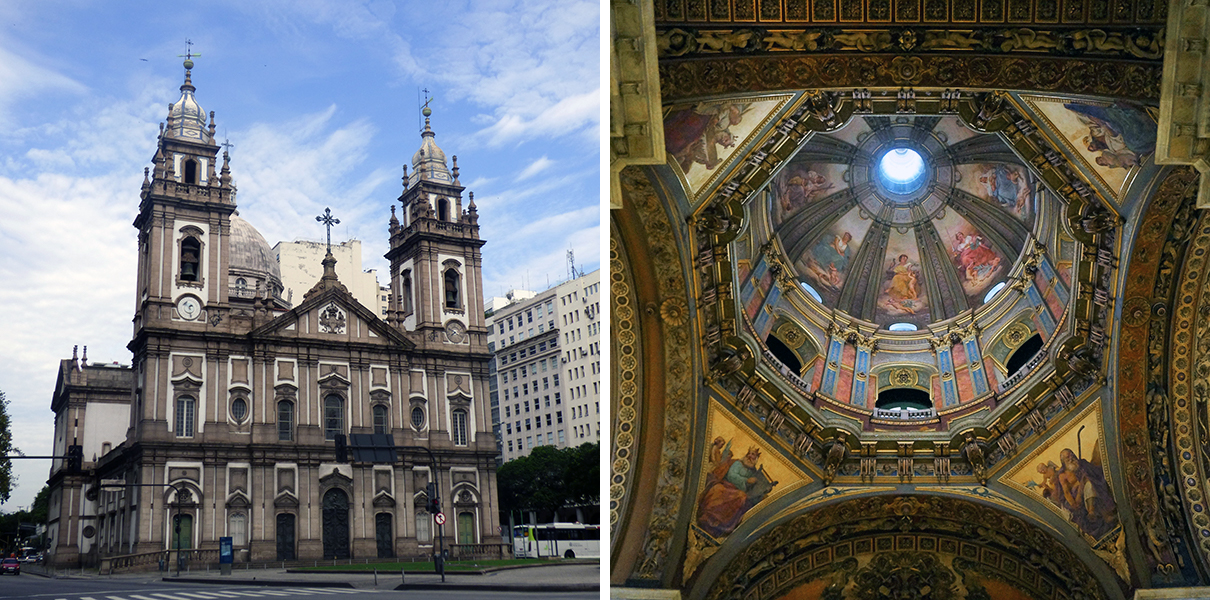
Works by the most important Brazilian painters and Portuguese sculptors can be found here. For example, João Zeferino da Costa was called to decorate the church in 1879 with dome murals, pendants and paintings, such as the impressive creation on the ceiling which is dedicated to the Virgin. The church’s doors are a masterpiece by themselves. They are made of bronze and were commissioned to the Portuguese sculptor Antônio Teixeira Lopes in 1901. The sculpture has the figure of the Virgin Mary with the Child Jesus.
Cathedral of Brasilia (Catedral de Brasília)
Brazil’s most famous architect, Oscar Niemeyer, was commissioned to build the city that would become the country’s capital: Brasilia. He built several of the most important buildings there, most of them for government purposes. However, one of the most impressive pieces he created was the Cathedral, which has been recognized worldwide for its beauty and originality.
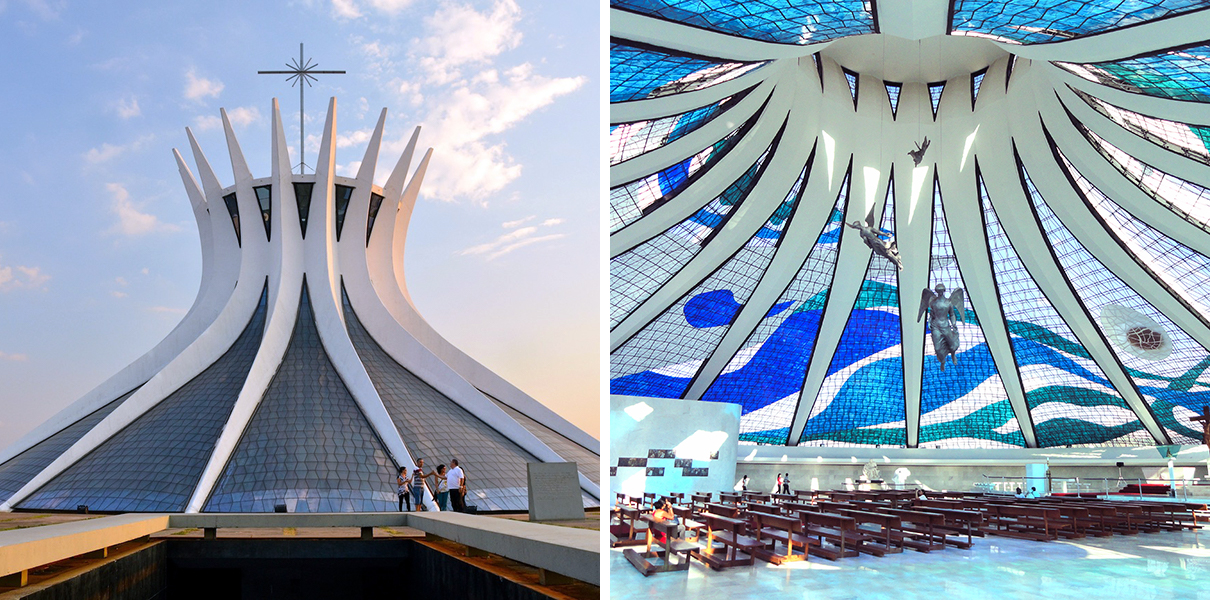
The Catedral Metropolitana Nossa Senhora Aparecida was the first monument built in Brasilia. Its construction began in 1958, but it wasn’t inaugurated until 1970. Its structure is extremely complex, since the circular form at the top weighs 90 tons. There are colorful stained glass windows along with several sculptures in the church. At the entrance you can find four bronze sculptures that represent the evangelists and inside there are three huge floating angels suspended by steel cables.
Our Lady of Mount Carmel of the Old See (Nossa Senhora do Carmo da Antiga Sé)
This church narrates not only the history of Rio de Janeiro, but of Brazil as a whole. Its altar was the place where the emperors Dom Pedro I and Dom Pedro II were crowned and where several royal weddings took place. When it was first built the sea was much closer, and in recent excavations there have even been found traces of mangroves, although it’s now located in the downtown of the city. The magnificent building that can be seen today wasn’t always the same. It was first built as a small church and then it was connected with a bridge to a convent. The original construction collapsed during the early 1700s and when it was rebuilt it became the impressive church one can visit now.
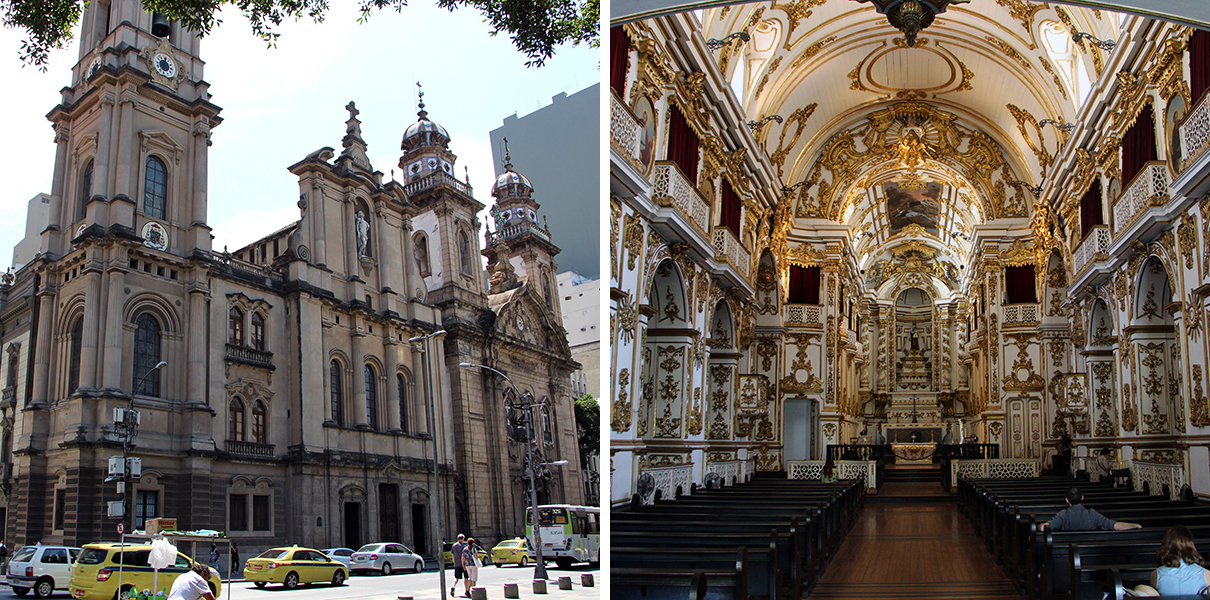
The outside of the church has a very serious style — sober and simple — whereas the inside is a rococo composition with white and gold details. Year after year the construction kept growing. A new bell tower and a couple of additional bells were added in the 1800s. Because of that it even became the Metropolitan Cathedral in 1900.








